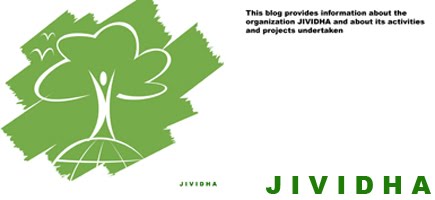1. Nature and Bird watching tour to Bhigwan and Mayureshwar Wildlife Sanctuary
Date:Sunday, 7th February 2010
What you can enjoy on the tour:
The wetland in Bhigwan village is home to a host of migratory birds coming from all parts of the globe, including South America, Canada, Siberia and Eastern Europe. This wetland is a part of the backwaters of the Ujani dam built on the river Bhima. This place, a paradise for bird watchers, attracts a large number of migratory waterfowl every winter. The wetland, covering an area of nearly 180 sq km, is being proposed as a bird sanctuary.
Located in Indapur taluk of Pune District, Bhigwan is 120 km from Pune on Solapur road.
Mayureshwar Wildlife Sanctuary is situated in Baramati tehsil of Pune District.
It spreads over 5 sq km of dry deciduous scrub forest with interspersed grasslands. Chinkara, hyena, wolf and Indian fox are the common species found here.
The best time to visit is August to mid February.
Experts members from Jividhawill be providing all information about the migratory birds and flora and fauna in Mayureshwar
Tour Fees: Rs 550/- per head
The fees include
Travel charges, breakfast and lunch
The fees does not include
Boat ride (as actual)
For details and registration contact:
Mr Rajiv Pandit : 9421019313;
e-mail: jividha2007@gmail.com
2. Nagzira Wildlife Sanctuary (5 day camp)
Date: 15th to 20th April 2010
About Nagzira:
Location: Tirora Range Of Bhandara Forest Division,
Maharashtra
Coverage Area: 152.810-sq-km
Best Time To Visit: April To May
Nagzira Wildlife sanctuary lies in Tirora Range of Bhandara Forest Division, in Bhandara district of Vidarbha region. The sanctuary is enclosed in the arms of the nature and adorned with exquisite landscape. The sanctuary consists of a range of hills with small lakes within its boundary. These lakes not only guarantee a source of water to wildlife throughout the year, but also greatly heighten the beauty of the landscape.
Flora :
The land vegetation of this sanctuary has diverse type of vegetation ranging from dry mixed forests to moist forest. The forest type is Southern Tropical Dry Deciduous Forests. The numerous lakes in the sanctuary make it important in agricultural point of view. Some of the lakes are Nagzira Lake, Chorkhamara Lake, Bodalkasa Lake, Rengepar Lake, Murpar Lake, Lendezari Lake, Malutola Lake, Thadezari Lake, Balapur Lake, Badbadya Lake, etc. These lakes area also important for the fishing purposes. The flora includes major tree species, small trees, shrubs, herbs, grasses and a few under-shrubs. Major trees are Ain, Dhavda, Bija, Garari, Tinsa, Tendu and Surya. Teak grows sparsely while Bamboos grow plentifully.
Fauna :
The forests provide ideal conditions of harborage to a variety of birds and animals. The animals commonly spotted are Tigers, Panthers, Leopards, Bison's, Sloth Bears, Sambar, Four-Headed Antelope, Blue Bull, Chital, Barking Deers, Mouse Deers, Civet Cats, Jackals, Jungle Cats, Spotted Hyena, and Hare. Among the birds that are prominent and commonly seen are Peafowl, the Grey Jungle Fowl and the Red Spur Fowl.
The habitats of sanctuary include 34 species of mammals, 166 species of birds, 36 species of reptiles, 4 species of amphibia, and number of fishes. The invertebrate fauna includes, besides a number of insects and ant species, 49 species of butterflies
Hurry!!!!! Limited Seats
For details and registration contact:
Mr Rajiv Pandit : 9421019313;
e-mail: jividha2007@gmail.com
Subscribe to:
Post Comments (Atom)

No comments:
Post a Comment